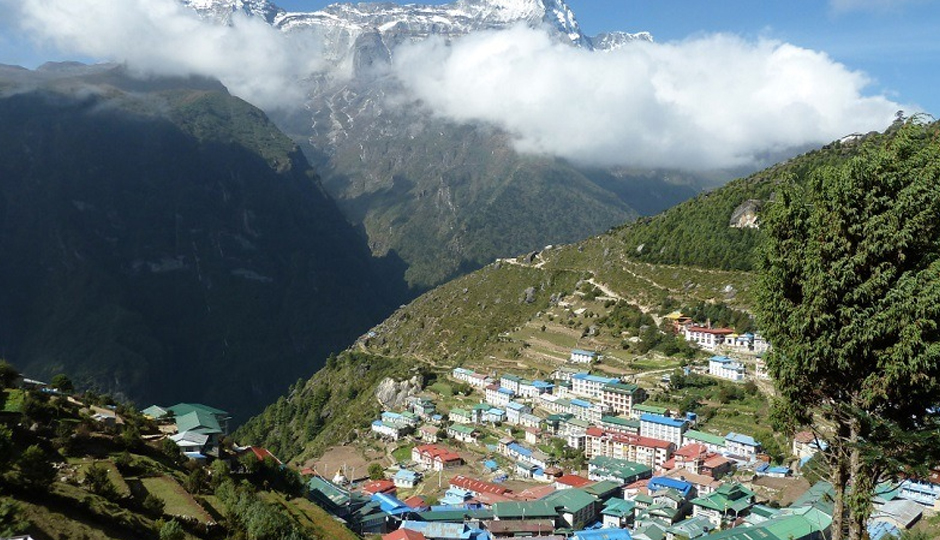15 Historical Monuments You Must Visit In India
By: Priyanka Maheshwari Fri, 04 Sept 2020 7:27:58
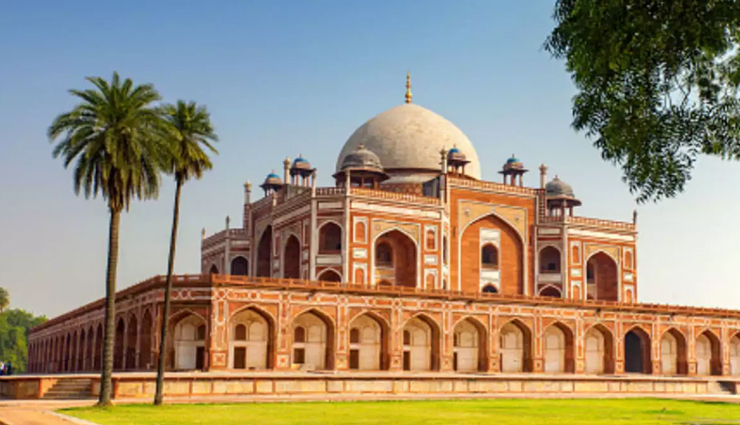
Often in India, you would find network of chaotic streets that lead to some breathtaking Indian monument. No matter how miserable the walk through these hideous narrow passageways make you feel, you usually end the day with pleasant memories. Ever thought why? Well, the skillfully done structures in India have their way of somehow making you lose yourself to them. Their brilliant architecture and art and the perfection of craftsmanship make one fall deeply in love with them. The fact that India is replete with several such exquisite monuments and we know it is difficult to be everywhere, so, we kind of prepared a list for you of 15 must see historical monuments in India. These monuments unveil country’s rich art and architecture and are actually capable of taking you back in time.
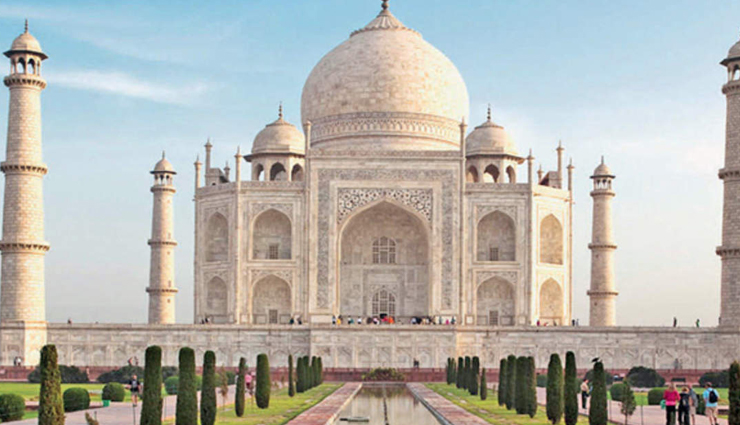
* Taj Mahal
Taj Mahal needs no introduction, dubbed as the epitome of love, this white-marble marvel is the most visited monument in India. Every year a large number of tourists visit Taj Mahal, which began to be built in 1632 after the demise of Emperor Shah Jahan’s wife Mumtaz. It is said specialists were brought in from as far away as Europe to produce the exquisite marble screens and pietra dura (marble inlay work) made with semiprecious stones. The Taj was designated a World Heritage Site in 1983 and looks as immaculate today as when it was first constructed. It is here one of the best love stories’ protagonists, Shah Jahan and his beloved Mumtaz rest in peace.

* Mysore Palace
Karnataka Mysore Palace is amongst the grandest royal buildings in India. Called the seat of the Wodeyars, the palace is a reflection of fine Indo-Saracenic architecture style. The palace boasts of stained glass, mirrors and gaudy colours that combine together to give the structure a unique look. Carved wooden doors, mosaic floors and a series of paintings depicting life in Mysore further embellish the charm of the palace. The armoury here has a collection of 700-plus weapons. Every Sunday and national holiday, the palace is illuminated by nearly 100,000 light bulbs in the evening making the palace look nothing but the best.

* Ruins of Hampi
Standing the test of time, the brave and beautiful ruins of Hampi can leave anyone spellbound. Spread in an area of 25 sq kms, the ruins of Hampi reflect an era of immense love for building structures. Most of the structures are perched on undulating terrain and takes days to be explored. Hampi is situated on the bank of River Tungabhadra that definitely adds to the rustic charm of the place. The Virupaksha Temple that stands proud and close to the Hampi Bazaar is teaser of what is about to be explored in this land of rich history. The further one goes, more stunned one gets.

* Khajuraho Group of Temples
One of the most important monument sites in India, Khajuraho boasts its medieval age temples. Believed to be 85 in number, Khajuraho has the largest group of Hindu and Jain temples in India. Recognized as a UNESCO World Heritage Site, the group of temples are known for their architectural brilliance, intricate carvings and, most famously, their erotic sculptures. Built by the Chandella rulers between AD 900 and 1130, the temples are divided into four, eastern, western, southern and northern group of temples, amongst which the Western Group of Temples is the most famous one amongst the tourists.
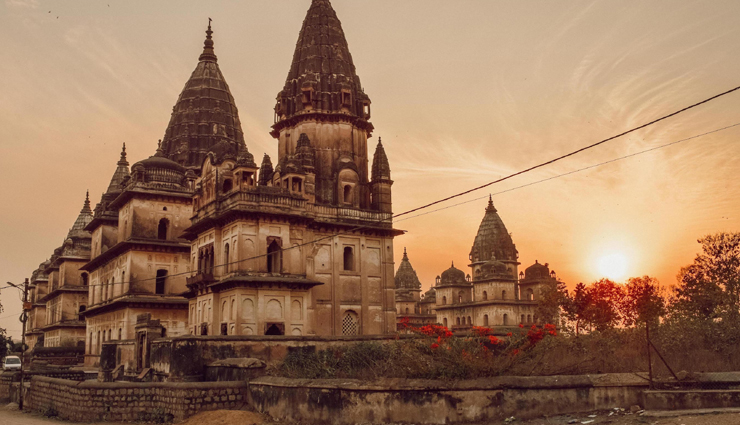
* Group of Monuments in Orchha
Orchha boasts of rich Bundela architecture in a small yet beautiful town through which runs the Betwa River. Orchha was lost for years and even today, it is only beginning to be discovered as a heritage destination. The town boasts of some magnificent though slightly dilapidated structures that were once adorned with fine Bundelkhand art. The Orchha fort complex boasts of massive structures like Jahangir Mahal, Raj Mahal, the Sheesh Mahal and the Rai Parveen Mahal. Across a medieval stone bridge looms another structure, the Chaturbhuj Temple. Other important architecture marvels at Orchha include Ram Raja temple, Laxminarayan temple and Chhatris (Cenotaphs).

* Brihadeswara Temple
Peruvudaiyar Kovil or Brihadeeswarar Temple is a luminous example Chola style architecture This temple is a tribute to Raja Raja Chola I and has been recognized now as a UNESCO World Heritage Site as “Great Living Chola Temples”. Built in sixteenth century AD, the temple has one of the tallest towers in India. At the entrance of the temple sits a thirteen feet high and sixteen feet long sacred bull or Nandi, made of a single rock. The temple is made of granite, which was brought from Tiruchchirapalli, 60 kms to Thanjavur’s west. The temple turned 1000 years in 2010.

* Kumbhalgarh
Located at a distance of 64 kms from Udaipur, Kumbhalgarh Fort was built by Maharana Rana Kumbha in the 15th century. Surrounded by by thirteen elevated mountain peaks, the fort is perched on the top most ridges in the area. The massive complex of the fort that has numerous palaces, temples and gardens. The impregnable has seven massive gates, seven ramparts folded with one another, toughened by curved bastions and huge watch towers. There are about 360 temples inside the complex. Amongst the main attractions in the fort is ‘Badal Mahal’ or the Palace of Cloud, which is believed to be the birth place of great warrior Maharana Pratap.
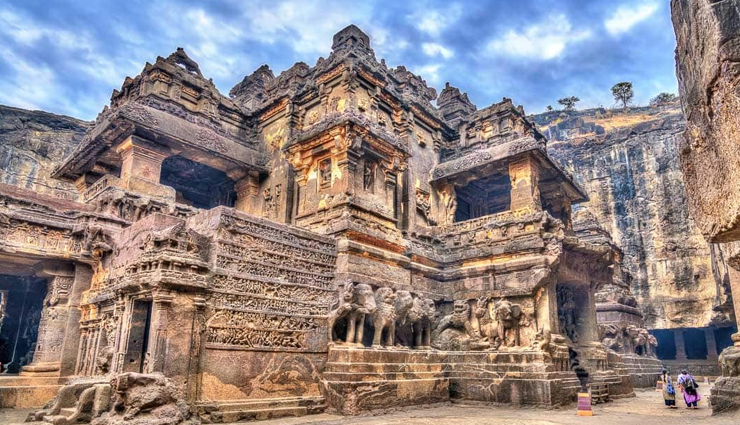
* Ajanta Caves
A series of 29 Buddhist cave temples, Ajanta Caves date back to the 2nd century BC. The caves are reckoned to be some of the best masterpieces of Buddhist art in India. Situated on a horseshoe-shaped cliff along the Waghora River, the caves were used by Buddhist monks as prayer halls (chaitya grihas) and monasteries (viharas) for about nine centuries.The caves are numbered from east to west and can be independently accessed from the riverfront. Preserved inside the caves are several specimens of Buddhist art. In some of the caves reflect the earlier Theravada tradition, in which Buddha is depicted only in symbolic form such as a throne or footprints. Also, there are a fewMahayana caves, where colorful murals and statues depicting the life (and former lives) of the Buddha and various Bodhisattvas. The caves also depict scenes from everyday life.

* Amer Fort
Probably one of the most famous forts in Rajasthan, Amer was once the capital of the state before Jaipur. Built in 1592 by Raja Man Singh, the fort is red sandstone and marble Rajput grandeur. The fort has been influenced by both Hindu and Muslim style of architecture and has gorgeous pavilions and halls that grabs the attentions of the tourists. The palace has four different parts, each with a separate entrance. Some of the major attractions in Amer fort are the maharaja’s apartments that are located around the third courtyard and are adorned with beautiful frescoed arches; The Jai Mandir (Hall of Victory) has gorgeous inlaid panels and multimirrored ceiling; Sukh Niwas (Hall of Pleasure) boasts its lovely ivory-inlaid sandalwood door and a channel that once carried cooling water right through the room.
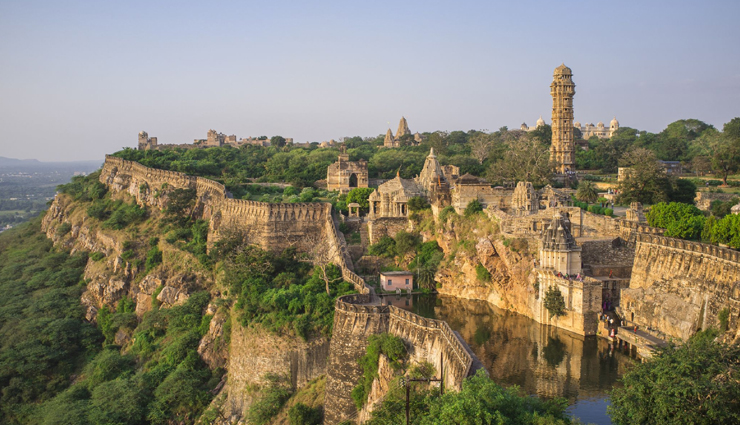
* Chittorgarh
The fort of Chittorgarh is the epitome of exquisite Rajput architecture style. It indeed exudes, the rich history of heroism and sacrifice, which echoes in its details. Perched on a hilltop fort, this massive fort also depicts Rajput culture and values. The fort lie sprawled in an area of 700 acres and is believed to have commissioned by Mauryans in 7th century but further structures were added to it by the successive Mewar rulers. The highlight of the fort is its 84 water bodies, out of which only about 22 exist today. All the talabs/ponds have a natural catchment, there are there are baories (water reservoir) located below the talabs. These reservoirs could store about 4 billion litres of water. Even after the water loss due to seepage and evaporation and other causes, an army of 50,000 could live in the fort for four years without fear of thirst.
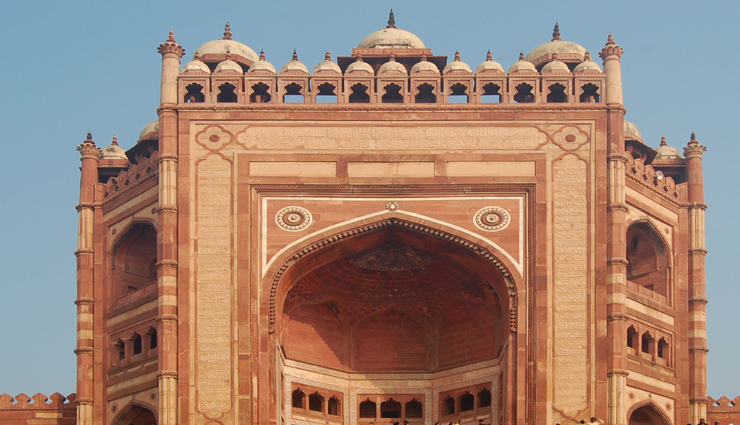
* Fatehpur Sikri
Fatehpur Sikri is indeed an important specimen of the Mughal dynasty. Reckoned to be the political capital of Mughal Emperor Akbarh between the period of 1571 and 1585. Rich in Mughal style of architecture, Fatehpur Sikri complex consists of breathtaking beautiful palaces, spectacular halls, and mosques. Some of the major monuments that worth the mention in Fatehpur Sikri are Buland Darwaza, which is amongst the largest gateway in the world; Diwan-i-Khas- Hall, which served as the royal chamber of Emperor Akbar; Panch Mahal, which is a fascinating five storey building which was meant to be the shelter of the royal ladies and mistresses. Tomb of Salim Chisti, the Palace of Jodha Bai, Birbal Bhawan, Diwan-i-Aam and Karawan Serai are some of the other attractions in Fatehpur Sikri.
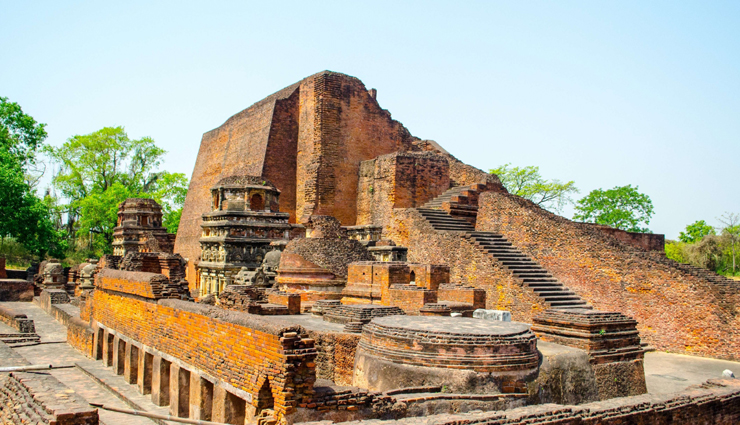
* Nalanda University
Nalanda University was founded in the 5th Century A.D. Known as the ancient seat of learning, where there 2,000 Teachers and 10,000 Students from all over the Buddhist world lived and studied, Nalanda now lies in ruins (although a part is under renovation). A walk in the ruins of the university, takes one back to an era that saw India leading in imparting in-depth knowledge to the world. The University flourished during the 5th and 12th century and has been once blessed by the presence of the Buddha. Nalanda also witnessed the rise and fall of several y empires. Profound excavation of the site has revealed many stupas, monasteries,hostels,stair cases,meditation halls, lecture halls and many other structures which speak of the grandeur this place once enjoyed.

* Group of Monuments at Pattadakal
Pattadakal-Group of Monuments is situated in a small village in the Bagalkot district. Situated on the bank of River Malaprabha, Pattadakal is the UNESCO World Heritage Site. The group of monuments at Pattadakal were built a symbol of victory of king Vikramaditya II over the Kanchi Pallavas . Pattadakal is a cluster of ten beautiful carved temples that offers a fine blend of northern and southern style of architecture. Among the ten temples nine are the Hindu temples and one is a Jain temple. The Hindu shrines are beautifully carved with various stories and scenes of the epics of Mahabharata and Ramayana. The walls of temples also carved with the Goddess, God, demons and battle fields. The Virupaksha Temple is the largest temple in the Pattadakal group of monuments.
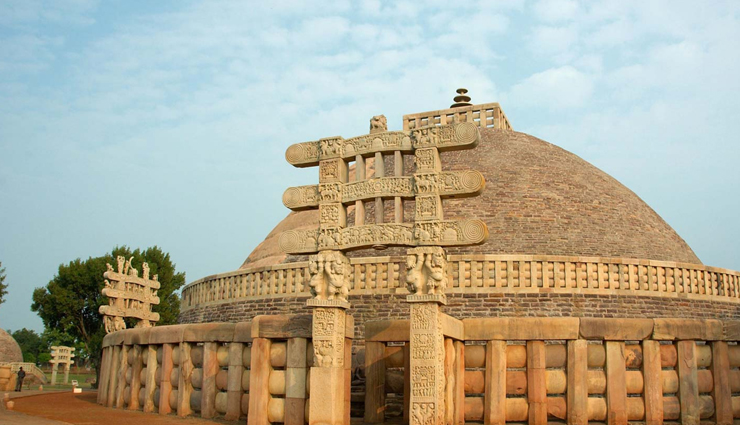
* Sanchi Stupa
Sanchi Stupa and its complex is truly a cultural repository. A UNESCO World heritage site, Sanchi Stupa is located in Raisen district of Madhya Pradesh. It is the place to witness the post Mauryan craftsmamship, which was indeed exquisite. The main stupa was originally commissioned by the emperor Ashoka the Great in the 3rd century BC and comprises of a semi-spherical dome, circumambulatory pathways called Pradakshinapatha along with pillared structured gateways called Toranas, which has sculptures from Jataka stories and previous births of Buddha and his life events. Various styles, stone carvings and narrative art depiction through stories are the highlights of Sanchi Stupa.

* Mahabodhi Temple
One of the earliest Buddhist temples built in brick, Mahabodhi Temple is where the colossal image of seated Buddha can be seen. The temple has a fine brickwork on the outside and depicts scenes from the life of the Buddha. Inside the temple, is the giant image of a seated Buddha depicting the supreme enlightenment. The courtyard of the temple is adorned with many smaller stupas and Buddha statues, out of which several are more than hundred years old. The parts of the railing that surrounds the area are among the oldest elements of Mahabodhi Temple that survive today. Also, the famous and sacred Bodhi Tree, under which the Buddha was enlightened is also placed close to the Mahabodhi Temple.





